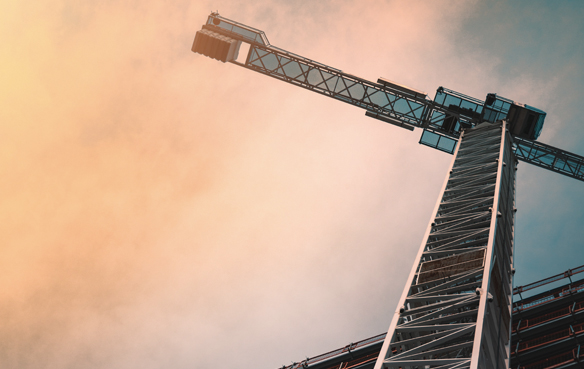One of the most misunderstood property insurance coverages is Ordinance or Law (O&L). Generally, Ordinance or Law insurance coverage provides protection for costs associated with the reconstruction, demolition or increase in costs of construction when the improvements are subject to changes with building codes. While this sounds simple enough, it can be full of hard-to-identify pitfalls that can be devastating if not properly addressed from the outset.
Here is an example: An office building, newly constructed in 1990 (and legally compliant at the time) experiences a fire and suffers a 60% loss to its insurable value. For the last 30 years, this building has been “grandfathered” as compliant with building codes, even though those codes have undergone massive changes.
Now, however, because the local jurisdiction requires buildings that incur losses greater than 50% to rebuild in compliance with all current codes, the owner is facing a massive shortfall in their settlement on the insurance claim. The property policy will pay for the 60% loss of property damage, but without proper Ordinance or Law coverage, there will not be any settlement for the following potential required upgrades:
- Installation of a sprinkler system on every floor
- New, upgraded electrical systems
- Compliance with the ADA standards
- Installation of elevators
- Any floors above six stories, instead of the existing ten prior to the loss
- Fees to architects and engineers for all of the above
- Resultant demolition and debris removal costs
- Resultant business income and extra expense losses
The Challenge of Staying Compliant
Since building codes undergo constant revision, most buildings are “grandfathered” against further revisions. The cost of staying compliant continually is consider as too economically onerous, and building owners are exempt from having to stay compliant. That is, until such time that certain events occur, which create a “trigger,” forcing building owners to bring the improvements up to code. These triggers are typically:
- Substantial physical damage (Typically 50% or more of “value”)
- Material renovations
Besides the scenarios requiring code upgrades above, there are even more factors such as density issues, setbacks, parking, etc. that can be impacted adversely.
“O&L coverage needs to be explicitly discussed and evaluated by all parties (brokers, insureds, lenders, and investors) as this coverage is otherwise excluded by property policies.”
The Simple Solution
It is clear that insurance coverage for Ordinance or Law matters is the smart choice. Especially as the premiums are marginal in relation to the potential loss. However, coverage for O&L is not automatically provided within standard property policies. In fact, coverage is usually excluded!
Exclusion for Losses Related to O&L
O&L coverage needs to be explicitly discussed and evaluated by all parties (brokers, insureds, lenders, and investors) as this coverage is otherwise excluded by property policies. The typical wording of an ISO Property Policy* states that the insurer will not “pay for loss or damage caused directly or indirectly by the enforcement of any Ordinance or Law:
- Regulating the construction, use or repair of any property; or
- Requiring the tearing down of any property, including the cost of removing its debris.”
* An ISO commercial property policy consists of: one or more coverage forms, one or more causes of loss forms, the commercial property conditions form, the common policy conditions form, and the declarations.
Why Is There An Exclusion For Ordinance & Law Issues?
The concept behind this exclusion concerns the matter of indemnity. Since insurance is a contract of indemnity, insurers promise to return the insured back to the position/condition that existed just prior to the loss. If insurance companies paid for all the costs associated with complying with O&L matters, then they would be “improving” the position of the insured. This would imply creating a betterment for the insured, which is not at all the point of insurance!
The term “replacement cost” means the insurer will pay: “the cost to repair, rebuild or replace… with like kind and quality materials that existed immediately prior to the loss.” The O&L exclusions is designed to prevent insurance carriers from paying for more expensive materials, designs or methods than those that existed prior to the loss.
Coverage Principals
Coverage A – Undamaged Portion of the Building
Coverage A indemnifies a property owner for loss to the undamaged portion of the building even though there was no direct damage to it. For example, imagine a loss where compliance with building codes would require that a portion of the building must be torn down, even though there was no direct physical loss to that portion of the building. In order to avoid this prospect, make sure there is enough coverage to get back to full replacement cost, in the event the entire structure has to be demolished.
Coverage B – Demolition and Debris Removal
Demolition Cost coverage will address the cost to demolish and/or clear a portion of a damaged or undamaged building, where required by law, and when other areas of this coverage section are triggered. The amount for Coverage B requires specific policy endorsement, and should be set to properly reflect anticipated needs. The default coverage amount in the industry is 10% of replacement cost. This may not be enough, though, in all cases. Taller buildings, especially, may require substantially more than a 10% RC limit.
Coverage C – Increased Cost of Construction
Coverage C provides coverage for the increased cost to repair or replace the building to the same general size at the same site to the minimum standards of the current ordinances or laws. As with the scenarios we explored above, there can be substantial additional costs above and beyond existing policy limits.
A default limit of 10% is the industry standard. Again, assessment of local building codes is necessary to determine a correct limit. Increased limits generally follow the increase age of improvements. Historical buildings require special analysis in particular. If building codes and local ordinances regarding density and height also mandate close risk management analysis.
Coverage D – Increased Period of Restoration (Business Income)
O& L exclusions in the property policy also extend to the Business Income/Rents and Extra Expense coverages. Surprisingly, this critical exclusion is not well known. Whenever an insured has to account for the additional time it takes to accommodate zoning laws, that incremental delay (and the associated loss of business income, rents and extra expenses), is an uncovered loss. This loss may actually be as much or more than the other losses combined.
Fortunately, this coverage endorsement does not usually have a limit of insurance associated with it. The coverage is for all business income and extra expense losses incurred, subject to the normal stipulation that the Period of Restoration ends when the “property should be repaired, rebuilt or replaced with reasonable speed and similar quality.” This is regardless of how the policy otherwise defines the period of restoration.
Coverage E – Loss of Value, Equity or Lender Loan Payoff
While there is no actual “Coverage E,” there are special endorsements which can be obtained in order to pay for the loss of equity and value in a property resulting from compliance with existing ordinances and codes. For example, if a property has to be rebuilt to a lower density, or a lower height, then there is a long-term loss of value that is separate from the loss of the undamaged portion of the building and resultant demolition and debris removal expenses. Or, due to loss of value, a mortgage has to be paid in full. None of these scenarios is covered by either the primary property policy, or by O&L Coverages A through D.
Conditions Precedent
Like any other insurance claim, before a claim for Ordinance or Law can be considered, three triggers have to be met:
- The loss has to be the result of a covered peril (fire, wind, flood, etc.)
- The loss has to exceed the “major/material” damage threshold of the jurisdiction
- The property must be deficient as respects some aspect of the zoning, say height, density, setback, etc.
Ordinance or Law – An Automatic Win for Lenders
Typically, lenders only require borrowers to purchase Ordinance or Law Coverage at loan origination when the results of a formal zoning report say that the property has a legal, but non-compliant status. While the loan document may actually require coverage in the event of a zoning change, it is impractical for a servicing department to track local zoning changes.
Further, just because a zoning report says a property is compliant at loan origination, there is no guarantee against issues if a major loss occurred. It is important to keep in mind that zoning reports are strictly limited to an examination of the following subjects:
- Setbacks, Height, Size, Density & Parking
- Right to Rebuild – Restoration of Damaged or Destroyed Structures
There are many issues outside the scope of zoning reports that could result in substantial additional costs. For example, zoning reports do not identify the need for upgrade electrical systems or sprinkler systems. Further, lenders should understand that a zoning report is like a balance sheet – It is only a snapshot in time about current compliance.
So, the ultimate question to ask yourself is this: why would a lender make a permanent decision to not require this coverage, based upon a snap shot in time that can change?
In summary, Ordinance or Law coverage is very complex, and the nuances of coverage are not well understood. Insureds and lenders alike should pay closer attention to the possibility of material losses related to coverage exclusions and deficiencies.






Leave A Comment
You must be logged in to post a comment.